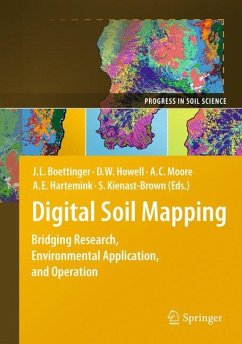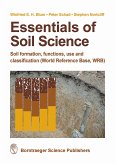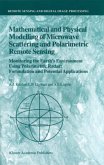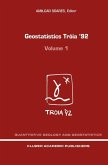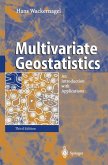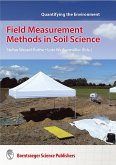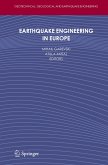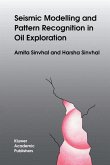Digital Soil Mapping is the creation and the population of a geographically referenced soil database. It is generated at a given resolution by using field and laboratory observation methods coupled with environmental data through quantitative relationships. Digital soil mapping is advancing on different fronts at different rates all across the world. This book presents the state-of-the art and explores strategies for bridging research, production, and environmental application of digital soil mapping.It includes examples from North America, South America, Europe, Asia, and Australia. The chapters address the following topics: - evaluating and using legacy soil data - exploring new environmental covariates and sampling schemes - using integrated sensors to infer soil properties or status - innovative inference systems predicting soil classes, properties, and estimating their uncertainties - using digital soil mapping and techniques for soil assessment and environmental application -protocol and capacity building for making digital soil mapping operational around the globe.
From the reviews:
"The book targets digital soil-mapping researchers and practitioners as it presents the most modern and advanced mapping techniques, and examines various approaches to digital soil mapping that span from its research and production to its environmental applications. The chapters are based upon papers of the Third Global Workshop on Digital Soil Mapping (DSM) that took place in Logan, Utah, USA in 2008, and explore this workshop's theme, Digital soil mapping: bridging research, production, and environmental application." (Anne Schucknecht, Environmental Earth Sciences, Vol. 62, 2011)
"The book targets digital soil-mapping researchers and practitioners as it presents the most modern and advanced mapping techniques, and examines various approaches to digital soil mapping that span from its research and production to its environmental applications. The chapters are based upon papers of the Third Global Workshop on Digital Soil Mapping (DSM) that took place in Logan, Utah, USA in 2008, and explore this workshop's theme, Digital soil mapping: bridging research, production, and environmental application." (Anne Schucknecht, Environmental Earth Sciences, Vol. 62, 2011)

